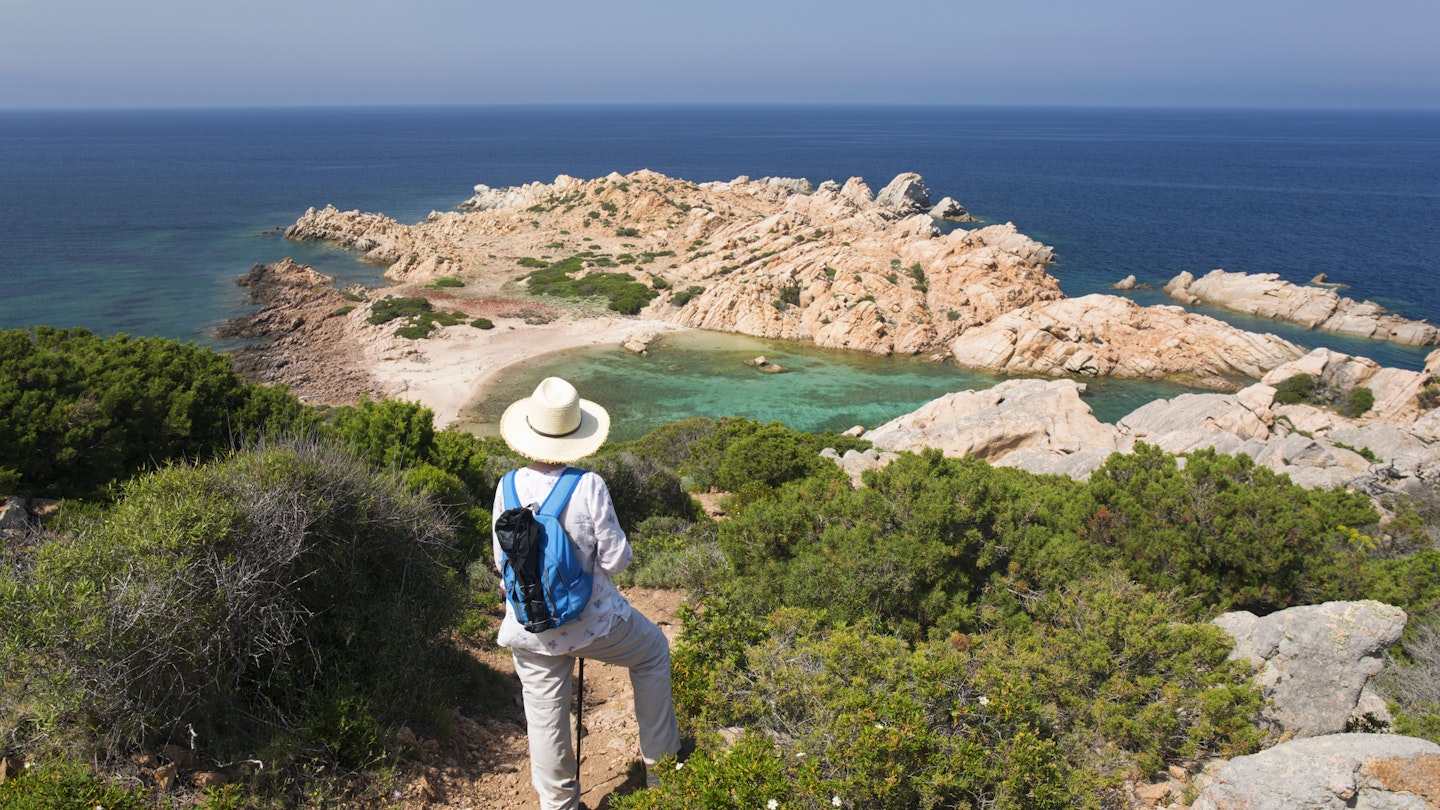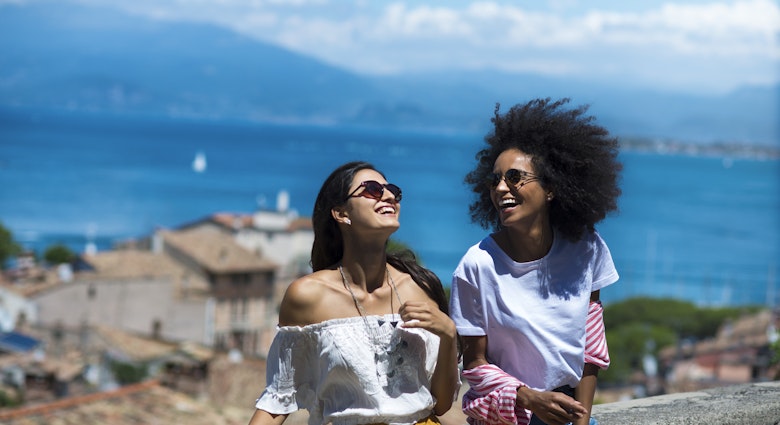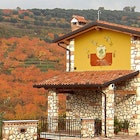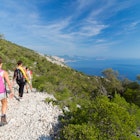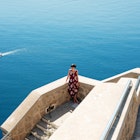With an 1800-km-long (1118-mile-long) shoreline sloping into some of the clearest Mediterranean waters, it's easy to see how Sardinia has become one of Italy's most coveted summer destinations.
Sparsely populated and naturally rich, the island's main draw has long been the collection of coves, white sand beaches and dramatic cliffs dropping into the ocean that line up along Sardinia's rugged perimeter. But you'd be wrong to think that coastal bliss is all the region has to offer.
Italy's second island by size (after Sicily) intrigues those who travel beyond the obvious with its geographical diversity and cultural complexity. Remnants of the mysterious Nuragic civilization are surrounded by the Mediterranean scrub that covers much of the dry interior, where hiking opportunities abound. Cyclists looking to explore the island at a slow pace can expect low-traffic roads that provide spectacular views. Sailing enthusiasts can explore archipelagoes of smaller islands hovering on transparent waters. And there's more – mouthwatering culinary traditions, rural villages and folk festivals can all be part of your Sardinian itinerary if you plan it right. Here's our guide to the top experiences in Sardinia.
Can't decide whether to go to Sardinia or Sicily? We can help.

1. Meet wild donkeys on the national park island of Asinara
A short ferry ride from Stintino or Porto Torres leads to Asinara, the uninhabited island emerging from the deep blue waters of northwestern Sardinia, whose protected lands are home to a large population of albino donkeys, wild horses and friendly goats. Before it was declared a national park in 1997, Asinara functioned as a penal colony and later as a maximum security prison, hosting some of Italy's most infamous criminals.
The paths that run through this sun-bleached island starting from Cala Reale connect the coves that hide behind lush hills with ancient watchtowers and abandoned prison infrastructure. A restaurant, a hostel, a cafe and a diving club open seasonally between spring and autumn, but for the rest of the year, you'll find the indigenous white donkeys (known as Asinara donkeys) roaming freely along the often deserted paths.
Planning tip: Asinara is ideally explored on a bike (or e-bike), which can be rented in Porto Torres or Cala Reale. This is a popular spot between June and September, but during the low season, the island is often empty. If you do visit in the low season, stock up on water and supplies before taking the ferry, as there is nowhere to buy food.
2. Sail in the Archipelago della Maddalena
Sardinia's first national park, established in 1994, is split between seven islands and several smaller islets scattered in turquoise water off the northwestern corner of the region. Providing some of the most impressive scenery Sardina has to offer, the archipelago is a spectacle worth taking in from the sea.
Isola Maddalena, the archipelago's main island, sits at the heart of the national park, surrounded by Caprera – historically important for having hosted revolutionary Giuseppe Garibaldi during his exile – Budelli, Santo Stefano, Santa Maria, Spargi and Razzoli. Most of these islands are uninhabited, including Budelli with its famous pink beach that is now a protected environment and can only be admired from a distance.
Planning tip: Ferries operated by Delcomar run between Palau and La Maddalena, taking 15 minutes to cover the distance. In summer, boat tours depart regularly from La Maddalena and Palau, running through the national park and stopping at various beaches along the way.
3. Try some criminally good cheese
With three million sheep – nearly two for each person – roaming Sardinia's rugged interior, it's no surprise that cheese has become one of the regional staples. The island's pecorino sardo is one of Sardinia's main culinary exports, and it's worth trying in all its varieties. Farms and cooperatives producing traditional cheese are easily found when driving through countryside roads – stop by to buy a wheel of pecorino or join a tasting session.
Pecorino is not the only cheese Sardinia is famous for. Casu Marzu is one of the island's best-known foods due to its illegal status; in 2009, the Guinness Book of Records proclaimed it the most dangerous cheese in the world. Why? Casu Marzu is made by allowing maggots to hatch in the cracks of the sheep's cheese and digest its proteins to turn it into a creamy product. Not something for the fainthearted. In fact, an EU law has made buying and selling Casu Marzu illegal in Sardinia – with high fines in place for those who do.
Planning tip: Many farms and agriturismi in the countryside sell cheese directly to the public. When driving around, just look for signs pointing to caseifici, which will usually be happy to let you taste some of their products.
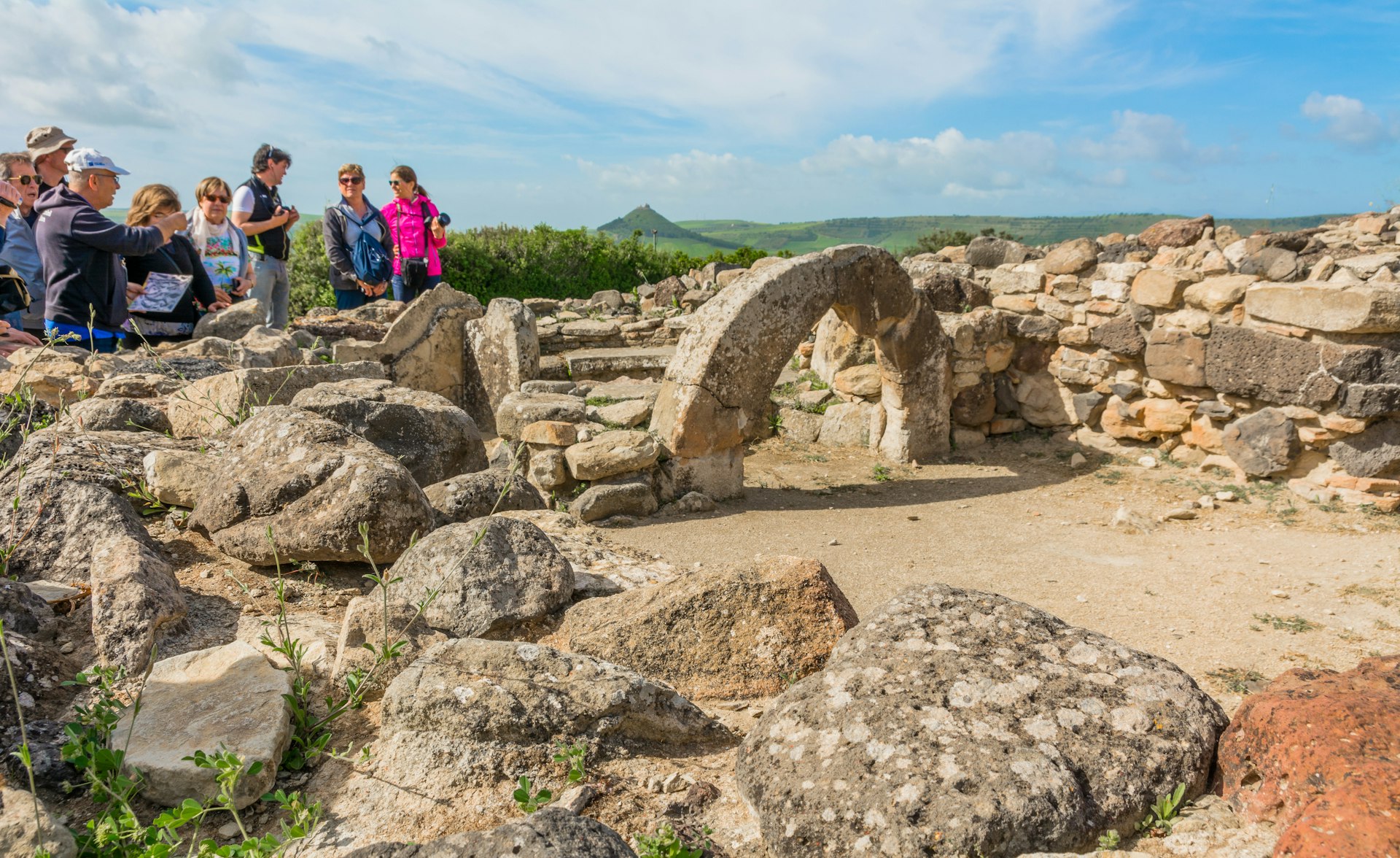
4. Explore the traces of the Nuragic civilization at Nuraghe Su Nuraxi
Thousands of nuraghi – stone-built towering structures erected by the obscure Nuragic civilization between 1800 and 700 BCE – mark the Sardinian territory, offering the chance to observe the ruins of some of the island's early settlements. The largest nuraghe – Sardinia's only UNESCO World Heritage site – is found in the village of Barumini. The core of the fortified complex of Su Nuraxi dates back to 1500 BCE and was later expanded with the addition of circular towers interlocking with each other. The archaeological site was discovered in 1949, and excavations have brought this ancient village back to light. It's the only nuraghe that has reemerged in its entirety in Sardinia.
Planning tip: The site can be visited with a guided tour only, available in both Italian and English. It's a popular day trip, s0 expect lines and bring water if you are visiting in the summer.
5. Join a folk festival
The relaxed atmosphere of Sardinia's cities is put on pause during the many festivals that take place year-round on the island. Carnival is one of the most awaited folk events – the city of Oristano celebrates in early February with the Sa Sartiglia festival, where up to a hundred masqueraded horse riders compete in the historic center, all trying to pierce a star with their swords.
Parades also take place in Mamoiada, south of Nuoro, where Carnival translates into the procession of Mamuthones and Issohadores, mysterious figures whose origins are believed to date back to the Middle Ages. The Mamuthones are represented by sinister men hiding behind black wooden masks and dark furs, carrying cowbells hanging on their backs. The Issohadores escort these eerie characters along town streets wearing red shirts and white trousers.
Cagliari also celebrates Sant'Efisio, the saint believed to have helped the city get rid of the plague in the mid-17th century – on May 1, thousands of people in traditional costumes parade through Sardinia's largest city.
Planning tip: Carnival is usually celebrated with dancing and mask parades, held on the last Sunday of Lent and Shrove Tuesday. While these festivals are spectacular, they are not meant as entertainment for tourists, and one should be aware of their cultural significance when visiting.
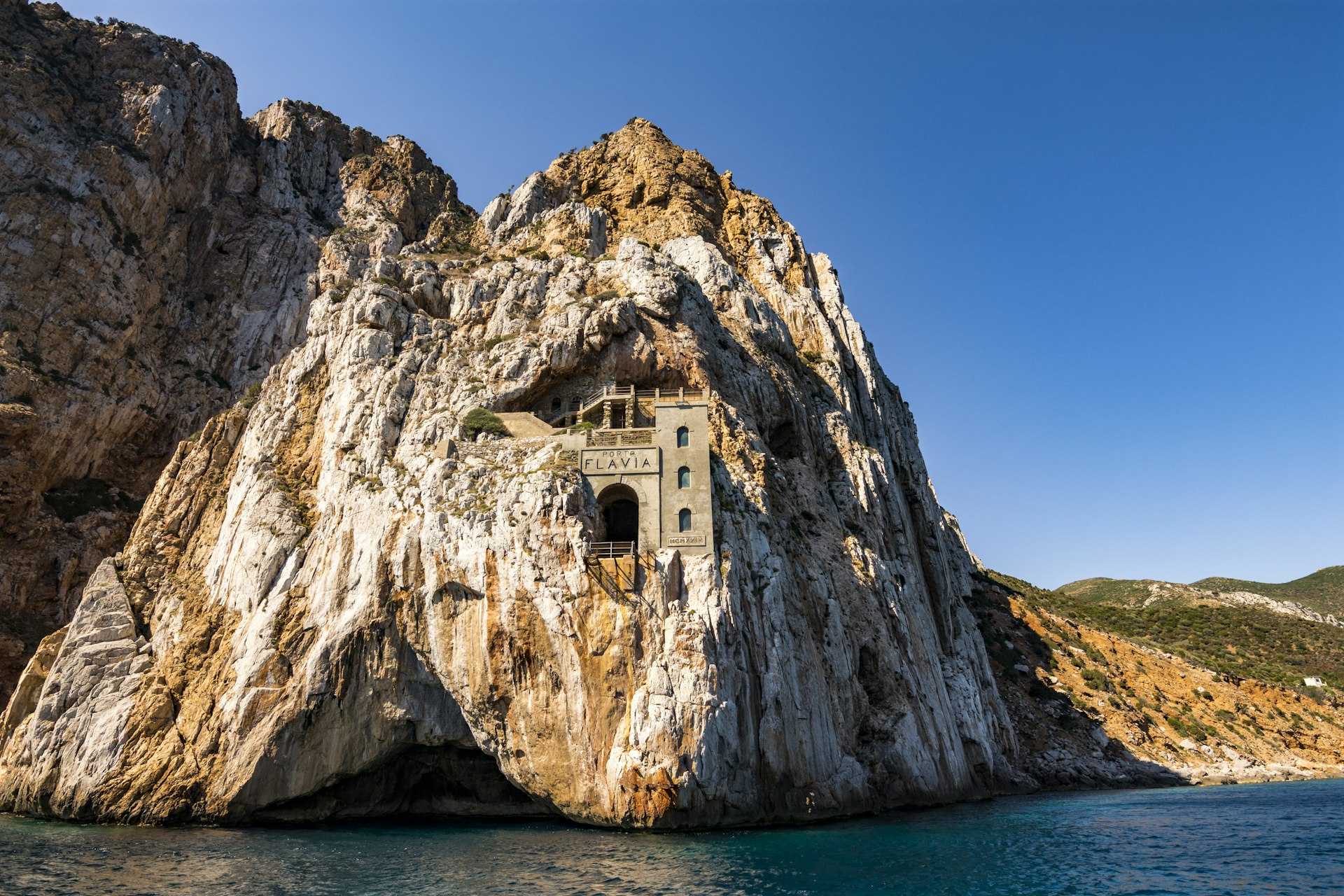
6. Hike the long-distance Cammino di Santa Barbara
Running through the beaches and mountains of Sardinia's southwest, Cammino di Santa Barbara is a long-distance hiking route that links the historic mining sites of one of the lesser-visited areas of the island. Stretching for 500km (311 miles) along routes carved by miners over centuries, this month-long trek blends wild nature with culture, allowing you to hike from village to village in a loop starting and ending in Iglesias. Besides astonishing vistas, ancient churches, archaeological sites, wineries and medieval hamlets dot the way.
Planning tip: A month-long hike requires some preparation. The Cammino di Santa Barbara's official website provides detailed information on all sections of the itinerary and accommodation options. This adventure is best done in spring or autumn when temperatures are still bearable. It is possible to cover many of the sections by bike if you prefer cycling over walking.
7. Snorkel or dive in the Mediterranean
Dolphins, tuna, octopuses, seahorses and many other underwater creatures populate the seas surrounding Sardinia. There's no better way to discover the exciting seascapes than to put a mask on and dive into the depths of the Mediterranean. The eastern coast of the island is typically less windy and more suitable for beginners, but options are available on both sides.
Immerse yourself in the rich ecosystem of Golfo di Orosei, in the northeastern part of the island, where experienced scuba divers will have the chance to see the relic of the Nasello ship that sunk in the 1940s. Alternatively, discover the natural treasures of Riviera del Corallo, in the area of Alghero, where spectacular rock formations form the backdrop of each dive.
Planning tip: Diving schools are available in most major coastal destinations, including Olbia, Isola Maddalena, Asinara and Alghero. Many diving tours only run in the summer, so book ahead if you are planning to join an underwater excursion.
8. Go caving in Grotta di Nettuno
The promontory of Capo Caccia, on the western Sardinian coast, not only offers awe-inspiring views of the city of Alghero opposite the gulf, but it also houses one of the most impressive networks of caves on the island. Grotta di Nettuno (Neptune's Cave) extends for 2.5km (1.5 miles) inside the rocky mountain, allowing for a walk in the dimly lit halls where impressive stalagmite and stalactite concretions have formed over the course of centuries around lakes and sculptural formations.
Planning tip: Grotta di Nettuno is found 24km (15 miles) north of Alghero. To enter the cave, you'll need to tackle the 654 steps of the Escala del Cabirol. Alternatively, you can reach the cave by sea – a ferry regularly departs from Alghero, crossing the Riviera del Corallo and taking you directly to the entrance in approximately 40 minutes.

